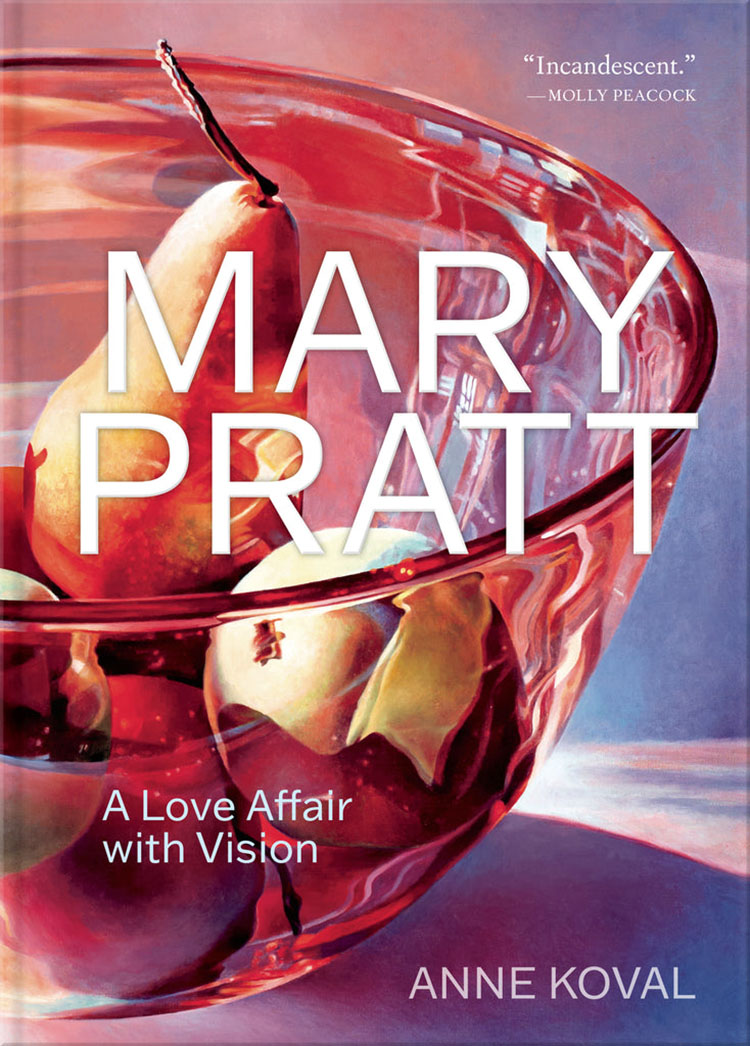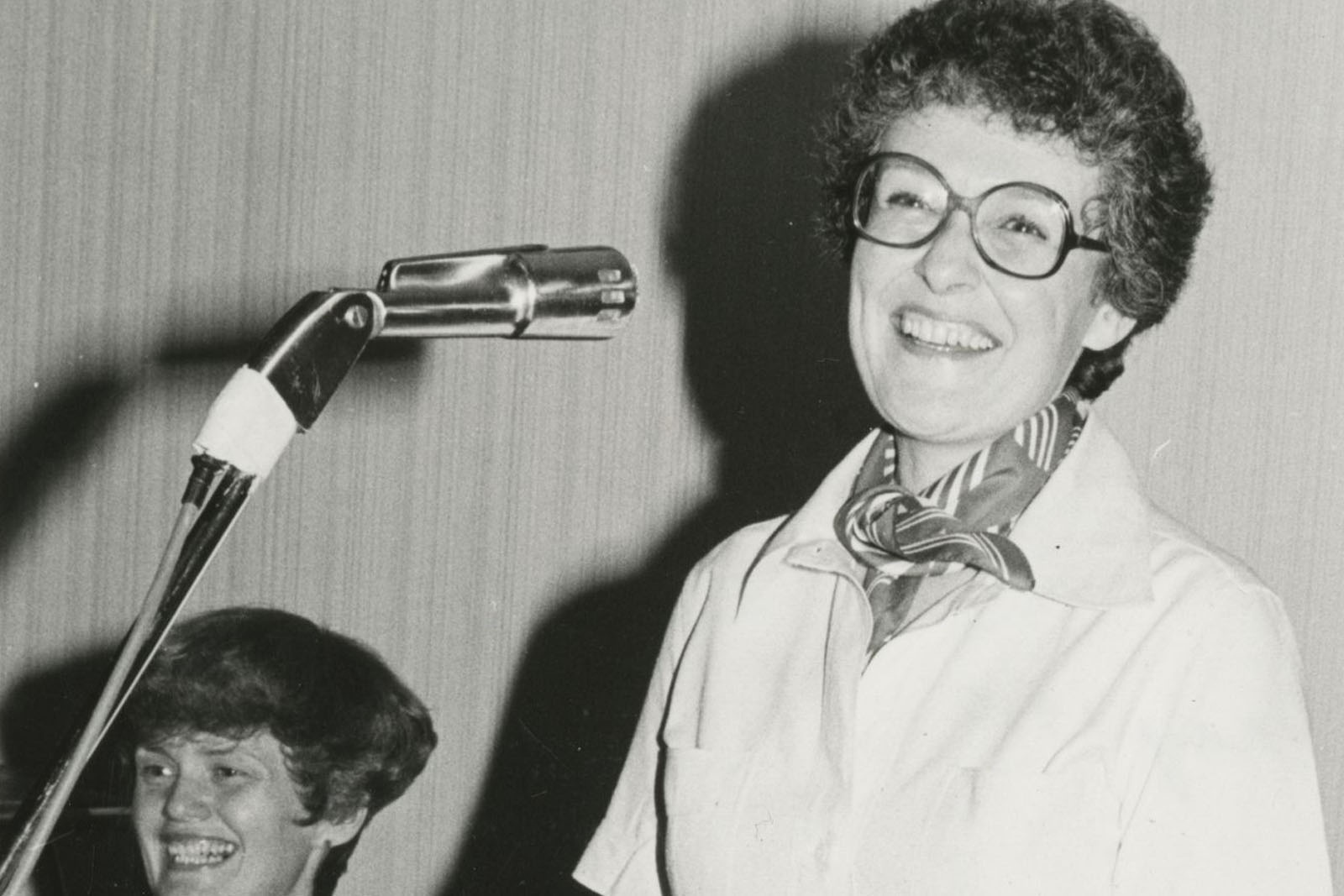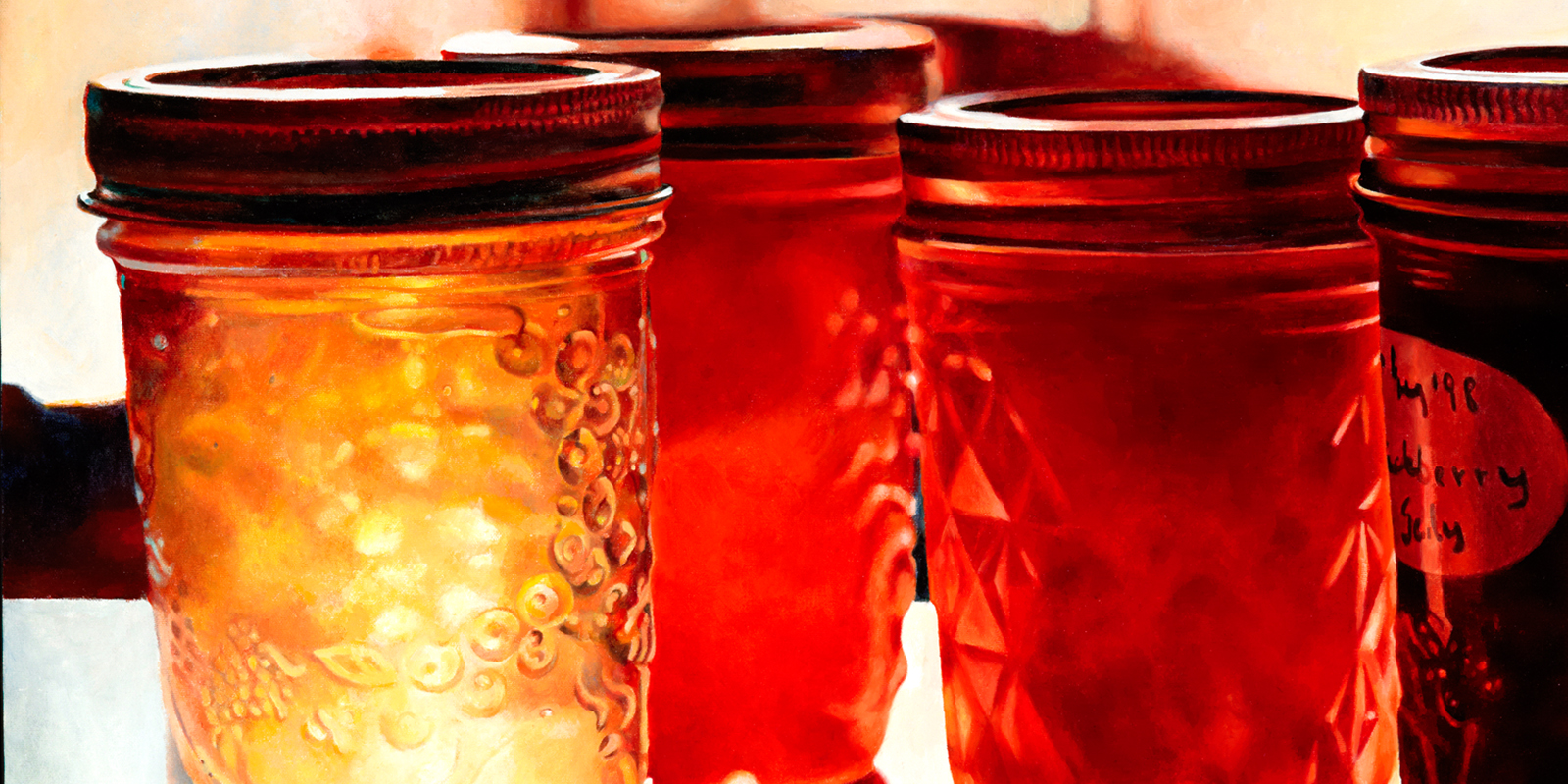Beyond the Canvas
When Dr. Anne Koval first encountered Mary (West) Pratt’s work at the Art Gallery of Nova Scotia in 2014, she experienced a sensation like no other — an art attack, a profound physical and emotional response to art, otherwise known as Stendhal’s Syndrome.

An art historian and professor of Fine Arts at Mount Allison, Koval was no stranger to the power of art. Yet, there was something about Pratt’s use of still life as a form of self-expression that spoke to her. This profound experience marked the beginning of her fascination with Mary Pratt, which has now culminated in her new biography, Mary Pratt: A Love Affair with Vision, published by Goose Lane this fall.
Koval’s early research was enriched by her close collaboration with the artist herself. In-depth interviews with Pratt, renowned Canadian artist Christopher Pratt, their children, and friends provided valuable insights into the artist’s life and work.
“It was fabulous to work with Mary and her family,” says Koval. “She is such a riveting subject and her ethos — a love affair with vision — became mine as well.”
The art world suffered a great loss with Pratt’s passing in August 2018 and Koval felt her absence acutely. However, Pratt’s voice endured in the archival materials housed in the Mount Allison University Archives. These materials include diaries, interviews, correspondence, photographic slides, and other records that document her career. They offered Koval a unique window into the intricate connection between Pratt’s life experiences and her artwork.
“I remember another male curator telling me the journals were a waste of time,” says Koval. “I’d already dipped into them by this point and I said, ‘Are you kidding me? They’re gold.’ But I realized I was reading them from a feminist perspective.”

Koval recognized the diaries’ value not just for their insights into Pratt’s artistic process, but also for what they revealed about how her personal life informed her art. As a wife and mother, Pratt’s life was in perpetual motion, leaving her with limited opportunities to sketch and paint the scenes unfolding before her. Photography allowed her to capture moments in time, preserving the play of light during moments of inspiration, which she could return to later by projecting slides onto canvas.
Her renowned Supper Table, painted in 1969, was the first time she used photography as a visual aid and her diaries track her progress.
“In June she got the slides from Christopher and started to paint. She writes down, ‘put in the outline, put in the background, put in the colour’ — over a series of two weeks,” says Koval. “You can tell she’s excited. Then, as soon as she puts the outline, she says, ‘Ned sick,’ and then the next day, ‘Ned has strep throat. Really sick.’ The next day, another kid gets strep throat, and then another, and then someone else has the chicken pox. All four children are ill and then she has company over the weekend and is expected to cook, clean, and entertain. And then, school ends, and there’s no more entries until the fall.”
Pratt’s diaries detailed the struggle to balance her creative pursuits with the demands of family life, offering Koval a glimpse into the artist’s world beyond the canvas.
“More recently, I presented a conference paper called Mary Pratt's Very Interrupted Life and I think that says so much, particularly about women’s lives, at least in that era.”

Koval acknowledges the stark disparities in opportunities and privileges that Mary and Christopher Pratt experienced in their respective careers. Despite graduating with their Bachelor of Fine Arts at the same time, Mary’s career was delayed by a decade as she devoted herself to raising children and managing the household. Yet, it was these very life experiences that became the central theme of her art.
“She loved her domestic life and she celebrates what she’s dealing with on a daily basis. You know, preparing meals, filleting fish,” says Koval.
These everyday occurrences shaped her art and her efforts to document them, to transform the mundane into beauty, gave voice to an entire generation of women.
Though Mary had what Koval calls “a complicated relationship with feminism,” there is no denying that her work carried distinct feminist undertones. Drawing a comparison to seventeenth-century Dutch male artists renowned for their still life paintings, Koval recognizes Mary’s unique advantage in portraying authentic domestic scenes, a perspective Mary herself acknowledged.
“The male Dutch artists had incredible virtuosity of being able to paint all these dead things. But as Mary said, they never prepared those meals. Likewise, male artists didn’t understand the female nude. Those men didn’t have those bodies. Pratt felt that a woman could paint the female nude more authentically and more affectively,” says Koval.
In the late 1970s, the decision for a woman artist to paint the female nude was a challenging one, given the perception of this genre as problematic. Pratt was among a select group of prominent women artists who ventured into this genre to challenge and redefine it and she did so by using a series of photographic slides taken by Christopher of their assistant and model Donna, with whom Christopher had had a relationship.
“Mary did a photo session with Donna on her own, but she also wanted to work with Christopher’s slides because she knew there was a chemistry there and she knew that the images were really strong,” says Koval. “It speaks to the level of professionalism they shared, even though there was tragedy and angst between all these people. What came of it is art. She made art out of this subject. It’s exceptional. She’s exceptional.”
The book, which positions Mary Pratt within the broader context of contemporary art, offers readers an intimate and captivating exploration of one of the most significant women artists in Canadian history.
Along with touring the book, Koval hopes to curate an exhibition that places Pratt’s art within a thematic context alongside her slides and her diaries, bringing the archival materials into conversation with her work. She is also optimistic that a new generation of researchers will continue contributing to Mary Pratt’s legacy.
“What I’ve done is create a path to the archives,” she says. “My hope is that there will be not only Mount A students, but graduate students coming from all over Canada to these archives, writing their PhD on Mary Pratt, taking my interpretations and challenging them,” she says, noting that there is still more to explore in Pratt’s records. “The Mount Allison Archives and its archivist are a remarkable source for any future researcher.”


